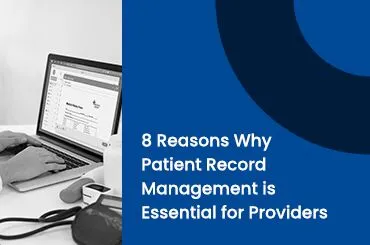You’ll often find a doctor reading through the transcripts of your previous medical records before they see you. That’s a part of the standard procedure called patient record management. This is a process that must be followed in every healthcare facility to keep track of patient information. Many nurses, doctors, and healthcare practitioners find it useful to review your previous medical data, past lab results, or previous hospital discharge notes before they check you. This also goes into conducting audits. The process of patient record management includes the entirety of your medical data and financial records related to your treatment. This article walks you through some of the ways in which patient record management is essential for audits and compliance.
What are the applications of patient record management in medical audits?
There are a few ways in which the process of keeping track of a patient’s data before is useful.
Here are some specific cases.
Healthcare analytics
These are key to proper billing and compliance audits. They enable an insurer to make sure that all hospital finances are in check. This helps them keep their financial data secure and well organized, as well as makes sure all reimbursements offered are up to the mark and according to the needs of the patients. In other words, these go into financial management, claims settlement proportions, and claims payout expenses.
Hospital audits
Patient record management produces more accurate medical histories and financial data for the different procedures, medicines, etc, because of the way the data is stored. This can be accessed by all healthcare practitioners involving the patient in one consolidated space and is extremely useful for accurate audits.
Improving the provision of care
Patient record management also enhances remote data collection procedures, such that it offers patients and doctors the opportunity to see and upload their previous or live reports or follow-up without an in-person visit. This is great for confirmations and follow-ups when dealing with any issues regarding previous medical data collection.
Managing risks
Having the patients’ medical summaries, records, and details consolidated into one place can be a life-saving intervention. It can reduce oversights and enable accuracy in treatment. It can also help patients who need urgent assistance with prescription refills, dosage changes, and lifestyle regimens, and they can benefit from the convenience of data collection with patient record management.
Wrapping Up
That brings us closer to how patient record management helps with improved accuracy in medical and hospital audits and mitigating risks. Patient record management has varied applications in the provision of health. It is useful in the entire process of diagnoses and doctor-patient communications, as well as in audits and insurance claims. Hence, it is the backbone of any patient data collection.
In addition, with extensive experience in IT outsourcing for the healthcare industry, Adamo provides scalable and cost-effective solutions. We prioritize sustainability and security, ensuring uninterrupted access to patient information and providing peace of mind with absolute data protection. Contact us for specialized services related to healthcare development solutions.
You may also read: What Happens to Your Money After You Donate to Cancer Research?

